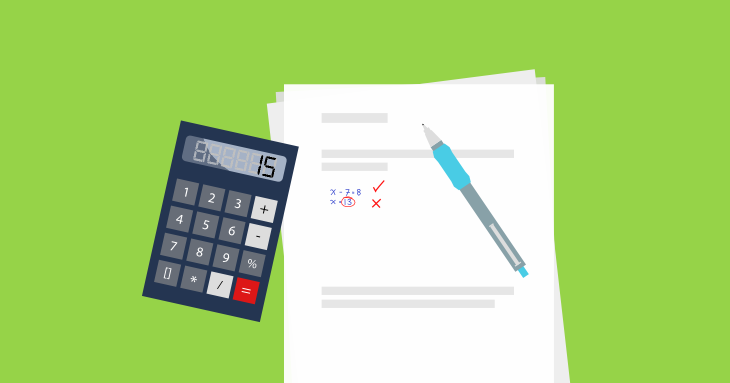How to Avoid Silly Calculation Mistakes

It’s easy to brush silly mistakes off as a one-time “oopsie”, but it’s much more than that. Habitual carelessness hurts grades, which can close off future opportunities. But more importantly, stupid mistakes on the job can cost credibility, money, or even lives. Developing good habits and calculation practice can reduce the risk of silly mistakes.
Guide to minimizing stupid mistakes in exams
Figuring out a tricky question is incredibly satisfying, but make a silly mistake and you may as well throw your hard work away. It’s what makes careless mistakes so notoriously infuriating.
Many assume grades only reflect their understanding of concepts, but it doesn’t stop there. Accurate computations, quick thinking, and attention to detail are also taken into account. All of these abilities are crucial for engineers. It’s easy to blame lost marks on picky professors, time limits, or just plain laziness, but stupid mistakes should be taken seriously. Fortunately, there are systematic ways of minimizing mistakes, even the silly ones.
Use a handwriting style that clearly distinguishes symbols
In elementary school, I never understood why some people bothered crossing their 7’s and z’s or curving their t’s and x’s.
Then algebra came along, and that’s when I started understanding why. Math problems started getting more complex and more variables were added into the equation. If you weren’t careful, it was extremely easy to mix up common symbols like:
- 2 vs Z
- t vs +
- × vs x
- 1 vs l
Mixing up your symbols can be catastrophic since you may end up trying to solve an unsolvable equation.
Ever since then, I’ve made a habit of crossing my 7’s and z’s and curving my t’s and x’s.
Practice the calculations beforehand
Courses with calculations usually involve following a procedure. Ideally you should know this procedure like the back of your hand.
While you’re studying, run through the same procedure multiple times with different questions. You can catch common tricky mistakes (e.g. forgetting negatives or constants) during these drills.
If you realise that the same mistake always trips you up, keep practicing. While you’re doing your drills, be hyper aware of the mistake and get in the habit of double checking that trouble spot. You should run through the same type of questions until you can consistently get the right answer. It’s almost like building muscle memory. If you follow these steps, the procedure will be like second nature during the exam.
Consolidate all the given information
Some calculation problems can be purposely tricky or overwhelming. Sketching a simple diagram can help paint the big picture if you’re stuck. Labelling the diagram with the given values can help organize your solution and highlight any tricky details.
One of the biggest things to look out for is sneaky unit conversions. Are the values given in root-mean-square? Are you dealing with meters per second or miles per hour? Horsepower or watts? Degrees or radians?
Consolidating all of the given information at the beginning makes it easier to notice unit discrepancies. If you dive right into solving the problem, details tend to get overlooked. Be sure to convert the values to the correct units from the start so you don’t forget about it.
Sanity check along the way
More complex questions require you to find various intermediate solutions before reaching the final answer. At every intermediate solution, take a couple seconds to step back and check whether or not the value makes sense. Are the signs correct? Is it in the correct order of magnitude?
If everything seems okay then continue on. If something seems off, re-evaluate your steps. Doing so can save a lot of time on exams since you can catch big mistakes early on. Catching these mistakes early can save you from re-doing the entire solution afterwards.
Sometimes a disorganized professor may write questions with nonsensical values that produce nonsensical answers. If you can’t find any mistake after re-checking your work, don’t dwell on it and continue on your solution. Even if you made a mistake, the partial marks you earn would trump the potential lost marks if you run out of time. Leave a question mark beside the question and check back if you have extra time.
Re-check until time is up
If you finish the exam with extra time, resist the urge to leave early and instead use up all the time to re-check your work.
First, check any questions that you aren’t too sure about. As mentioned above, double check any answers that didn’t seem quite right.
Next, continuously re-check your exam. Each time you go over it, look for a different type of silly mistake. For example in the first run, you can specifically look for copying errors. In the second run, look for computation errors. In the third run, double check your significant figures, and so on.
Taking a step back and reviewing your work with a clear mind is one of the best ways to catch stupid mistakes.
